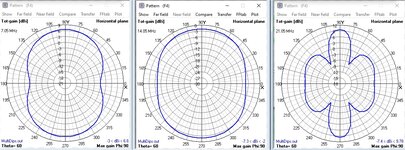Externet
Advanced Member level 2
- Joined
- Jan 29, 2004
- Messages
- 579
- Helped
- 28
- Reputation
- 58
- Reaction score
- 29
- Trophy points
- 1,308
- Location
- Mideast US
- Activity points
- 5,666
Good day.
Multiband dipoles like this do work well, I use one for 7; 14; 21 MHz

Can the same principle be applied for magnetic loops to receive ~70; ~200, ~600 MHz ?

What would happen if made with more than the 3 loops pictured above ?
Multiband dipoles like this do work well, I use one for 7; 14; 21 MHz
Can the same principle be applied for magnetic loops to receive ~70; ~200, ~600 MHz ?
What would happen if made with more than the 3 loops pictured above ?
